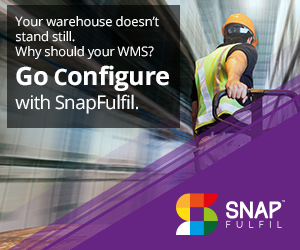Why real-time WMS is a modern day must-have
As customers become more sophisticated, requiring accurate, secure, fast data exchange and as the competition becomes more intense, companies need to have the information-technology tools to support the business and build reliability, speed, control and flexibility into their warehouse operations. The ability to operate and communicate in real time is crucial in today’s fast-moving technological world.
There are many systems on the market and these include inventory management systems (IMS), warehouse management systems (WMS) and warehouse control systems (WCS).
Each type of system has its own specific functionalities. Simply put, IMS have a stock management and control function that tells you where the stock is and how much there is of it. It will also record stock receipts and despatches. More sophisticated systems can calculate safety stock, provide forecasting tools and enable vendor managed inventory.
A WMS on the other hand tends to be a lot more sophisticated and not only does it manage the stock within the warehouse but it also manages all the processes in order to make the warehouse more efficient and effective.

Finally, a WCS tends to manage the automation systems within the warehouse, initially being the interface between a WMS and the automation equipment. Nowadays some of these systems have increased their functionality and are now seen as fully-fledged WMS.
An IMS is not the same as a WMS. We have come across many companies who have purchased an inventory management system in the belief that it will operate the warehouse efficiently. An IMS will manage the inventory at stock location and quantity level, but these systems will not manage processes and productivity within the warehouse.
A WMS directs and controls operators and equipment within the warehouse carrying out specific tasks in the most efficient and cost-effective manner. A WMS can process data quickly and coordinate movements within the warehouse. It can produce reports and handle large volumes of transactions as experienced in e-commerce operations.
Overall, IMS tend to be simpler, while WMS are more complex and integrate with other systems within the company such as transport management software and Enterprise Resource Planning (ERP) systems.
In order to be productive, warehouse systems need to be able to work in real time, manage all the processes within the warehouse and have the ability to communicate with other company systems.
The potential benefits of having a WMS in place include the following:
- real-time stock visibility and traceability;
- improved productivity;
- accurate stock records;
- reduction in mis-picks;
- automatic replenishment;
- reductions in returns;
- accurate reporting;
- improved responsiveness;
- remote data visibility;
- improved customer service; and
- minimised paperwork.
When deciding whether to use an IMS or WMS companies have to understand which system is best suited to their needs and their business model.
Smaller businesses may assume that their requirements are too basic to warrant investing in a functionally rich WMS to manage their stock. However, the introduction of low cost, easy to use, cloud-based warehouse management systems has made these systems affordable and accessible. Companies are able to ‘rent’ these systems on a month-by-month basis using Software as a Service (SaaS) and cloud computing, where you can pay as you use, share resources and only use the functionality you require.
Inventory management systems can work perfectly well for small businesses where there are a small number of product lines and orders and very few staff, however, as businesses grow they will require more sophisticated systems to enable them to meet ever increasing customer demands.



